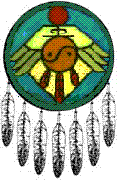

 Click The Images To Go To Page Indicated In The Flag
Marty Mann and the Evolution of Alcoholics Anonymous
Marty Mann is scarcely a household word today, yet she is arguably one of the most influential people of the 20th century. Marty's life was like a blazing fire, but was nearly extinguished by personal tragedy and degradation. She rose to a triumphant recovery that powered a historic, unparalleled change in our society. Through her vision and leadership, the attitude of America toward alcoholism was changed from a moral issue to one of public health. This was a tremendous shift, especially considering America's long temperance history that culminated in the Prohibition Amendment of 1920. Marty was able to accomplish these things despite numerous, very difficult setbacks along the way, any one of which might have overcome a lesser person. She would be the first to claim that her sobriety, found through Alcoholics Anonymous (AA) in its very earliest days, was the most important factor in her success.
The false notion has been perpetuated that Marty M ("Women Suffer Too,") was the first female in A.A. with enduring sobriety. After repeated slips Marty finally was sober from Christmas 1940 until some time around 1960, when she again relapsed. She sobered again and remained so until her death.
Marty was born into a life of wealth and privilege in Chicago in the early 1900s. Her family sent her to the best private schools. She was blessed with beauty, brains, a powerful will and drive, phenomenal energy and stunning charisma. She traveled extensively. She debuted, and then married into a wealthy New Orleans family. Her future seemed ordained to continue on the same patrician track except for one serious setback on the way. When Marty was 14, she was diagnosed with Tuberculosis (TB). In those days, drugs for treatment were not yet available. However, her family could afford to send her to an expensive private sanitarium in California for a year, and then provide her with a private-duty nurse at home for another year or two. She had one recurrence of the disease several years later, and for the rest of her long life she knew that she was always in remission from this ancient scourge. Marty was no sooner past this hurdle when another disease began to assert itself. When Marty was 17 she could drink as an adult. Moving at a fast pace in an elite social group, she had a "hollow leg." A party girl from the onset, she could out drink anyone and be the only person left standing to get everybody else home. Later, she was to learn that her unusual capacity was an important early sign of alcoholism. Suddenly her father lost all his wealth, and she had to go to work. Untrained for any specific career, she was nevertheless favored with important moneyed and social connections in this country and abroad. Her natural talents led her into the world of public relations. Marty's drinking was an occupational hazard in her line of work. Within 10 years she went from a bright, assured future to a hideous existence of round-the-clock drinking. She lost one job after another. She became destitute, living off the goodwill of friends, convinced that she was hopelessly insane. Two suicide attempts nearly killed her, and desperate drinking threatened to finish the job. At this point, friends intervened. She was accepted as a charity patient at Bellevue Hospital in New York City, and then transferred to Blythewood, an exclusive private psychiatric inpatient center in Connecticut as a charity patient. There were a few patients who were alcoholics, like Marty, whose behavior had become bizarre or unmanageable. It is difficult these days to imagine a world where the term "alcoholism" was virtually unknown and there was no treatment except "drying out." Alcoholics Anonymous didn't exist. The medical profession was as much in the dark as the alcoholics and their baffled families. The concept of alcoholism as a disease -- and a major, treatable one at that -- was scarcely known. Then in 1935, two alcoholics, Bill Wilson and Dr. Bob Smith, happened to come together to help each other stay sober. Alcoholics Anonymous, probably the most famous grassroots, self-help health movement of all time, was launched on its shaky way. Within four years, Bill and Dr. Bob and a handful of other pioneers had attracted two small groups of men who managed to achieve sobriety, one in Akron, Ohio (Dr. Bob's home), and the other in New York City (Bill W's home). They decided to write down their experiences in the belief and hope that they could thereby broaden their outreach to other suffering alcoholics. The book "Alcoholics Anonymous" was born, and at the heart of it was the famous "12 Steps," which have been adopted and adapted by literally hundreds of other kinds of self-help groups. The year was 1939. The year of 1939 was also a fateful year for Marty. She had been a patient at Blythewood for months, still unable to remain completely sober. Her enlightened psychiatrist, Dr. Harry Tiebout, gave her a manuscript of "Alcoholics Anonymous" to read, convinced that it would help her in a way he could not. This opened the door to her recovery. Eventually she was persuaded by Dr. Tiebout to attend her first AA meeting, held in the home of Bill Wilson and his wife, Lois. This was still during the time that there were only two AA meetings in the whole country. Each little group met just once a week. Many members literally drove over a hundred miles each way to attend the fellowship. Contrast that scene with the thousands and thousands of AA meetings available across America today, the majority a short distance from home. Furthermore, all of the AA members were men. A few women had drifted in and out, but the stigma against women alcoholics was as strong as ever. Women rarely had the courage to seek help, even if they acknowledged they might have a problem. Marty loved and appreciated AA from the beginning. She was immensely relieved to learn she was not incurably insane, but instead had a disease that manifested itself as "an allergy of the body coupled with an obsession of the mind." Scientific research describes this condition as a biochemical abnormality affecting the body and the brain in ways that increasingly limit the predisposed person's ability to function or to stop, despite dire consequences. Marty had three relapses during her first 18 months in AA. Slips, or relapses, while distressing and sometimes tragically fatal, are not uncommon with many of those who come into AA. Later, Marty settled down, and the real healing began as she started to apply the 12 Steps to her life. Five years after she found AA, Marty had a dream. Her vision was to educate the whole country about alcoholism. She was obsessed with eliminating the historic stigma attached to chronic inebriation. She joined forces with the Yale School of Alcohol Studies (now at Rutgers), where early significant scientific research into alcoholism was underway. Eventually her nationwide educational efforts led to the creation of a separate organization, the National Council on Alcoholism (now the National Council on Alcoholism and Drug Dependence or NCADD). NCADD has been this country's most important educational, referral source for alcoholics, their families and communities all across the country. Marty was the right person at the right place and time. She was extremely fortunate to find a wealthy donor, Brinkley Smithers, who was committed to her goals and generously supported her organization. Marty was intensely focused on her mission. More than one person said she was like a train coming down the track -- jump on or get out of the way. Her elegant appearance, captivating charm, intellect and breathtaking charisma swept people off their feet. By all accounts, she was one of the most spellbinding speakers this land has ever seen. Even audiences initially skeptical of her message, that an alcoholic is a sick person who can be helped, ended up enthusiastically supporting her. For most of her 24 years as director of NCA, she maintained a speaking schedule of over 200 talks annually. The purpose of Marty's talks was to establish local volunteer groups in every major city. These affiliates of NCA would carry out NCA's mission to provide education, information and referral for their respective communities. Government financial support was minimal to nonexistent. Most of the funding for the affiliates came from local, private donations. By now, one would think Marty had it all. Restored health, sobriety, and the realization of her dream. Then, once more, she was felled by a disease beyond her control -- this time it was cancer. Several surgeries were required, and eventually she recovered from the cancer. Doctors were amazed by her medical history: recovery from three major diseases, recurrences of severe chronic depression, plus the physical consequences of her early suicide attempts. When she was 65, Marty retired with some reluctance from active management of NCA. It was not easy for her to relinquish control of her creation and the central focus of her passion for over two decades. As NCA's promoter without peer, she continued a punishing speaking schedule on the organization's behalf for many years, but gave up her personal involvement in day-to-day affairs. In the early 1950s, Edward R. Murrow, distinguished journalist, selected Marty as one of the 10 greatest living Americans. During her lifetime, Marty was extremely well known in the local, regional and national press. Her appearances before state legislatures and Congress were unforgettable for those present and produced results. She was made an honorary member of prestigious professional groups here and abroad. Marty's last talk was before AA's international convention in New Orleans in 1980. Two weeks later she suffered a stroke at home and died very shortly thereafter. She was 75. The organization and history of NCA after Marty has been mixed. There were some rocky periods, which are to be expected following the retirement and demise of a long-term, extremely dynamic and charismatic leader. The affiliates across the country also experienced some ups and downs. However, the organization persisted, stabilized and continues to be an effective public voice on behalf of alcoholics. Marty's legacy is sparingly reported in the histories of Alcoholics Anonymous, probably because NCA was not an arm of AA. However, AA grew enormously in the decades that Marty was active. Wherever she spoke, she generated extensive publicity, and new AA members appeared in droves. Her appearances were especially important in attracting women alcoholics. They figured that if a person as impressive and inspiring as Marty could admit that she was an alcoholic, they could too. Women like Betty Ford are direct inheritors of Marty's example. (Excerpted from a biography of Marty Mann, by Sally and David Brown.) Index of AA History Pages on Barefoot's Domain As in so many things, especially with we alcoholics, our History is our Greatest Asset!.. We each arrived at the doors of AA with an intensive and lengthy "History of Things That Do Not Work" .. Today, In AA and In Recovery, Our History has added an intensive and lengthy "History of Things That DO Work!!" and We will not regret the past nor wish to shut the door on it!!
KEEP COMING BACK!
On the Web Aug 30, 2001 in the Spirit of Cooperation Three mighty important things, Pardn'r, LOVE And PEACE and SOBRIETY |


